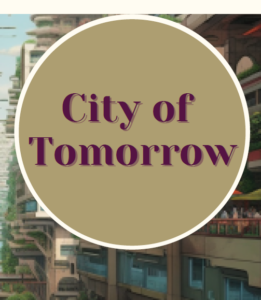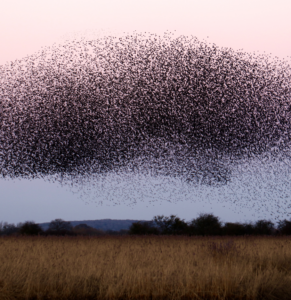Welcome to a future filled with Ultra-Agers
It’s a very good time to be very old. We’re entering an era in which the elderly will have extraordinarily long lives and a position of wealth and power in the culture. In the 1950s, the average human life expectancy was less than 50 years. Today, the global number has surpassed 70 years–and is headed upward.
One indicator: Over the last 15 years, the number of Americans over the age of 100 has grown by a staggering 43% to over 72,000. The signals show this is a global phenomenon. There are a huge number of people over the age of 65 around the world. The 600 million mark has been passed, and that number will reach a billion in the next decade, then1.6 billion by 2050. And their spending power is strong. In the US, people 50-plus drive nearly $8 trillion worth of economic activity. By 2030, those over age 55 in the US will account for half of all consumer spending growth since the Great Recession, in Japan, that number escalates to 67%; in Germany, 86%.
And these long-living, big-spending consumers aren’t the stereotypical unsophisticated grandparents of years past. Boomers are quite tech-savvy and are free-spending shoppers. In fact, when it comes to housing, transportation, entertainment, food and alcohol, Americans 60-plus will account for at least 40% of consumption growth over the next decade.
We call the rising ranks of the very old Ultra-Agers, and they will set a new lifestyle and spending standard that will rock the economy–in a good way. And in a profitable way for you, if you sense the signals and take action now.

One indicator: Over the last 15 years, the number of Americans over the age of 100 has grown by a staggering 43% to over 72,000. The signals show this is a global phenomenon. There are a huge number of people over the age of 65 around the world. The 600 million mark has been passed, and that number will reach a billion in the next decade, then1.6 billion by 2050. And their spending power is strong. In the US, people 50-plus drive nearly $8 trillion worth of economic activity. By 2030, those over age 55 in the US will account for half of all consumer spending growth since the Great Recession, in Japan, that number escalates to 67%; in Germany, 86%.
What emerging needs will define this class of the very old and very vibrant? And how can Brands cater to these Ultra-Agers?
Faith Popcorn’s BrainReserve has some intriguing predictions.Contact Us
Wellness = The New Wealth
Age 100 will be the new 50. The very old will be agile, strong, sharp-witted and engaged. Alphabet (aka Google) has Calico, shrouded in mystery, busily trying to disrupt aging, as other companies like Elysium and Life Biosciences are working to disrupt aging, often with a focus on sirtuins, the genes that protect organisms from deterioration and disease. They offer up supplements like NAD+, NMN, and metformin (often prescribed for diabetics) with the goal of keeping cells younger and fully functional. There’s even the Longevity Fund to support this work with seed and Series A VC; it currently has $37M under management, investing in breakthrough longevity companies.
Till super-long lifespans are achieved, other innovations will help us youthify. Exoskeletons–external hardware that enhances strength (if you’ve seen a Transformers movie, you get the gist)–are already being used by some Ford and BMW factory workers, and in the near future, these benefits will be achieved via sleek jumpsuits that deliver greater power and mobility through flexibility circuitry, allowing even those over 100 to pursue a physically demanding, intrepid lifestyle.
Brain health will be enhanced, with nootropics (supplements for enhanced cognition and focus) and micro-dosing, as well as hardware. Deep-brain implants–like tiny pacemakers in our gray matter–will circumvent Alzheimer’s (already showing promise in trials in Ohio State University’s Wexner Medical Center). They will also provide the ability to talk freely for those who’ve suffered strokes or brain injuries as they age. Scientists at the University of California, San Francisco, have pioneered an embedded device that gives real-time speech to those who’ve lost the ability to talk, due to disease or stroke.
Another incredible innovation:
Progress is being made in eliminating those neuro-degenerative disorders that destroy important thought processes. Scientists at Stanford University say they’ve devised antibodies that block a specific gene related to brain aging—thereby giving old mice the cognitive prowess of younger ones.
“The mice became smarter. Blocking [the gene] CD22 on their microglia restored their cognitive function to the level of younger mice.”
— Tony Wyss-Coray, Senior Author
Whatever advancing years threaten to take away, science and tech will restore. Those who are 100 years old will expect to feel as young as–well, the young. Any products and services that deliver that will thrive. CBD products, with their anti-inflammatory properties, will rule. In-home fitness, like Peloton (which lets customers log into a class virtually), will, too.
FutureThinking:
The expectation among Ultra-Agers will be to have perfectly personalized care to optimize their health and keep them fully functioning. How about Peloton-like fitness equipment that elevates Ultra-Agers in both product design and messaging? Imagine a bike that’s engineered to better support less supple joints–and classes taught by the ranks of InstaGlamma’s, those super-fashionable and aspirational women over age 70 who have droves of social media followers, such as @iconaccidental, @saramaijewels, and @jennykeeoz ?
(Also, a hotspot: The sexual health of Ultra-Agers. As this group stays young and frisky, VR porn with age-appropriate imagery becomes vital.)
Who will custom-curate menus to sync with and nourish their gut biome? Or how about a section of Seamless that allows Ultra-Agers or their families to order nutritionally-perfect, pre-prepped meals for one? What about using AI to develop wellness bots that advise the older set on how to enhance their health every day, tweaking their routine to respond to their biodata, the weather, pollutants and other forces that may threaten?
Not sure where to begin? We can help.
The Never-Ending Career
While retirement may still be a dream for many, plenty of Ultra-Agers will still be working–either because they need to financially or because they want to.
“Ultra-Agers will soon rule the world of work.”
— Faith Popcorn
Older workers have become fastest-growing population of employees, with twice as many seniors as teens currently holding down jobs in the US. And this vector will continue until the robots replace them. Other industrialized nations, like Japan and South Korea, have their workforces aging even 30-year period that will end in 2024, workers age 55 and older will have transformed from the smallest segment of American workers to the largest, says data from the US Bureau more rapidly.
Older employers are a boon for business. In a Bloomberg report, recruiters praised older workers as experienced, on-time, cheerful and dedicated in contract to their younger peers.
FutureThinking:
As Ultra-Agers stay on-the-job, opportunities unfold. Who will reskill these workers to learn the latest technologies? Will a for-profit version of the Khan Academy be the answer–or an embedded brain chip that rewires their gray matter? And what about benefits and incentives–the current fixation on giving Millennial workers such perks as free egg-freezing will no doubt be supplanted by new policies that let Ultra-Agers pursue their desire for a compressed workweek and flexible scheduling. And if coworking and co-living continue to grow, will WeWork brand a network for those older workers who don’t care much about cold brew on tap? Why not network Ultra-Agers with others who want to venture to similar locales and have similar authentic experiences, whether that means adaptive fitness bootcamp courses for those over age 80 or ramen-making classes? Maybe create a Sage Society of elders who travel the globe, enlightening the younger generation with their knowledge, while exploring new terrain.
A New Kind of Caregiving
While we’ll be living longer and better lives, it won’t happen overnight–and not everyone will have 130 years of impeccable health. Ultra-Agers will need extra care and also systems to fight the rough tides that push them into isolation. Already, 30%, or over 11 million seniors, live alone, according to a report from the U.S. Administration on Aging. In Japan, the country with the highest number of UltraAgers, there is a true crisis in securing aides for elders, as the birth rate declines precipitously and there aren’t enough younger hands to share the care.
Technology is already advancing to solve this problem. Just as Airbus has created CIMON as a helpful AI-fueled companion to astronauts on the International Space Station (the ultimate test of isolation), so too will every elder soon have a hardwired assistant. Japan is testing out Robear, a cartoon-ish robot that helps the elderly get out of bed, and the Care-o-bot is used in German assisted-living facilities, bringing residents food and drink and playing memory games with them. Similarly, BUDDY, another companionable bot, provides seniors with social interaction, medication reminders, and Facetime connections with relatives, while also monitoring for any issues they are having, but much more sophisticated than “Help, I’ve fallen and I can’t get up” gizmos we have today.
Faith Popcorn’s BrainReserve told the United States Postal Service, caregivers may be found amid their own ranks.
A chip in the mailbox could alert relatives if an Ultra-Ager hasn’t picked up their mail for a couple of days; specially trained mail carriers could perform wellness checks in this situation. Whether hardwired or human, a watchful eye will be vital.
“Ultra-Agers will be the vanguard of cultural change in the coming decades, and businesses need to be ready to serve them.”
— Faith Popcorn
FutureThinking:
Beyond bots, AR, VR and holographic platforms that let those seniors who are less mobile explore and engage with realms that fuel their creativity and maintain cognitive skills. Roaming distant planets, meeting one’s Victorian-era ancestors, and connecting with like-minded peers on other continents will all be possible, thanks to algorithms that entertain. Tailoring them to suit the needs of UltraAgers will be a boom industry as lifespans lengthen.
And harnessing the wisdom of this generation of sages will be another emerging mandate. The learning of Ultra-Agers can be uploaded, then downloaded to the brains of the younger generations–and their offspring. We’re watching to see who productizes that first.




